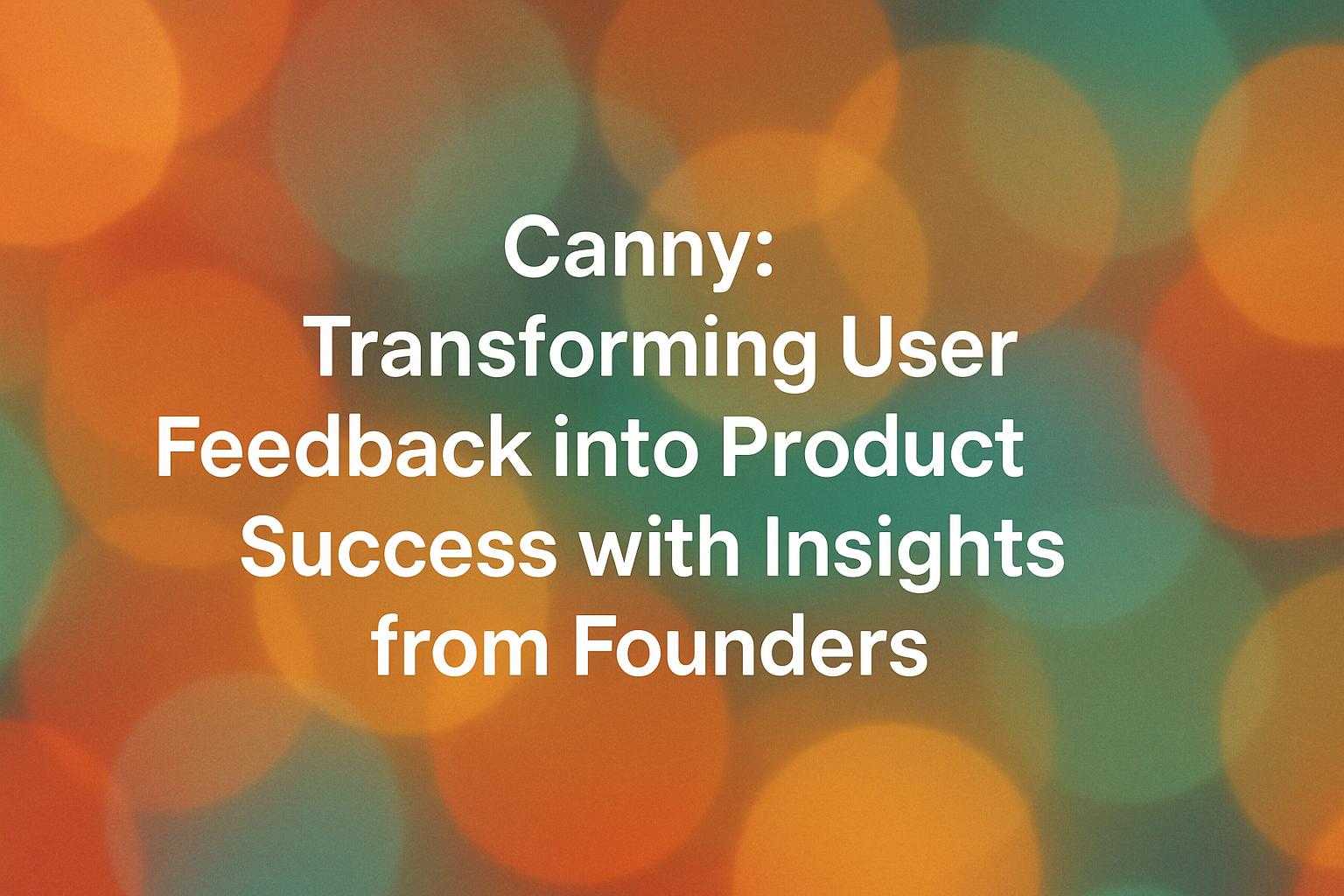Canny: Transforming User Feedback into Product Success with Insights from Founders

Company profile
Company business details
Motivation to build the product
The founders, a software engineer and a product designer, were motivated by the need to enhance the user experience in providing feedback. They recognized that many users felt unheard and wanted to create a solution that would allow businesses to listen to their customers more effectively.Problem that their product solves
Canny solves the problem of scattered user feedback by providing a centralized platform where companies can collect, track, and prioritize feedback from their users. The end users are primarily B2B software businesses that need to make informed decisions based on real user needs and pain points, making it crucial for them to gather and act on feedback to improve their products.Their unfair advantage
Canny's unfair advantage lies in its focus on the B2B market and its freemium model, which allows users to experience the value of the product firsthand before committing to a paid plan.Strategies
Pre-Launch (Product Development & MVP)
Customer Feedback Integration
Sarah and her co-founder, while developing Kenny, focused on integrating customer feedback from the very beginning. They built a basic version of the product and actively sought feedback from potential users, which helped them validate their idea and understand the market needs. They used their own product, Kenny, to collect feedback, ensuring they were aligned with their target customers' needs. This approach allowed them to iterate quickly and make necessary adjustments based on real user input.
Customer Feedback Tool Development
Andrew and his co-founder Sarah identified a significant gap in the user feedback process while using popular products like Netflix and Spotify. They realized that giving feedback to large companies was often a frustrating experience, leading to a lack of engagement from users. To address this, they developed Canny, a customer feedback tool that allows users to submit feedback and vote on features they want to see implemented. This approach not only helps users feel heard but also assists businesses in tracking and prioritizing feedback effectively.
Documenting the Journey
Canny's co-founders, Sarah Hum and Andrew, began by sharing their startup journey publicly. Initially, this was a way to create content, but it evolved into a commitment to transparency and helping fellow founders. They documented their experiences, wins, and lessons learned, which not only kept them honest but also motivated them to continue. This approach resonated with other indie hackers and entrepreneurs, providing them with insights they craved when starting their own journeys.
Community Building through Feedback
Sarah Hum and her co-founder Andrew started with a project called Product Pains, which was a community platform for users to give feedback on various products. They grew this community to about 5,000 members, leveraging word of mouth and connections from Andrew's previous work at Facebook. This initial community engagement helped them understand user needs and preferences, which later informed the development of their product Canny.
Launch Stage
Early Revenue Focus
From day one, Sarah emphasized the importance of generating revenue. They aimed to validate their product by ensuring that customers were willing to pay for it. This focus on revenue not only provided the necessary funds to sustain their operations but also served as a strong indicator that they were solving a real problem for their users. By prioritizing paying customers, they could better understand which features to develop and enhance.
Learn more about Canny

Ultimate customer feedback prioritization for SaaS with Sarah Hum @Canny

UpStack CEO Yossi Mlynsky Interviews Canny Co-founder Andrew Rasmussen | UpStack

“Sharing Our Experiences, Wins, and Lessons is Also Humbling. It Keeps Us Honest,” and Other Notes on Building a Customer-First, Bootstrapped Business with Canny’s Co-Founder, Sarah Hum



